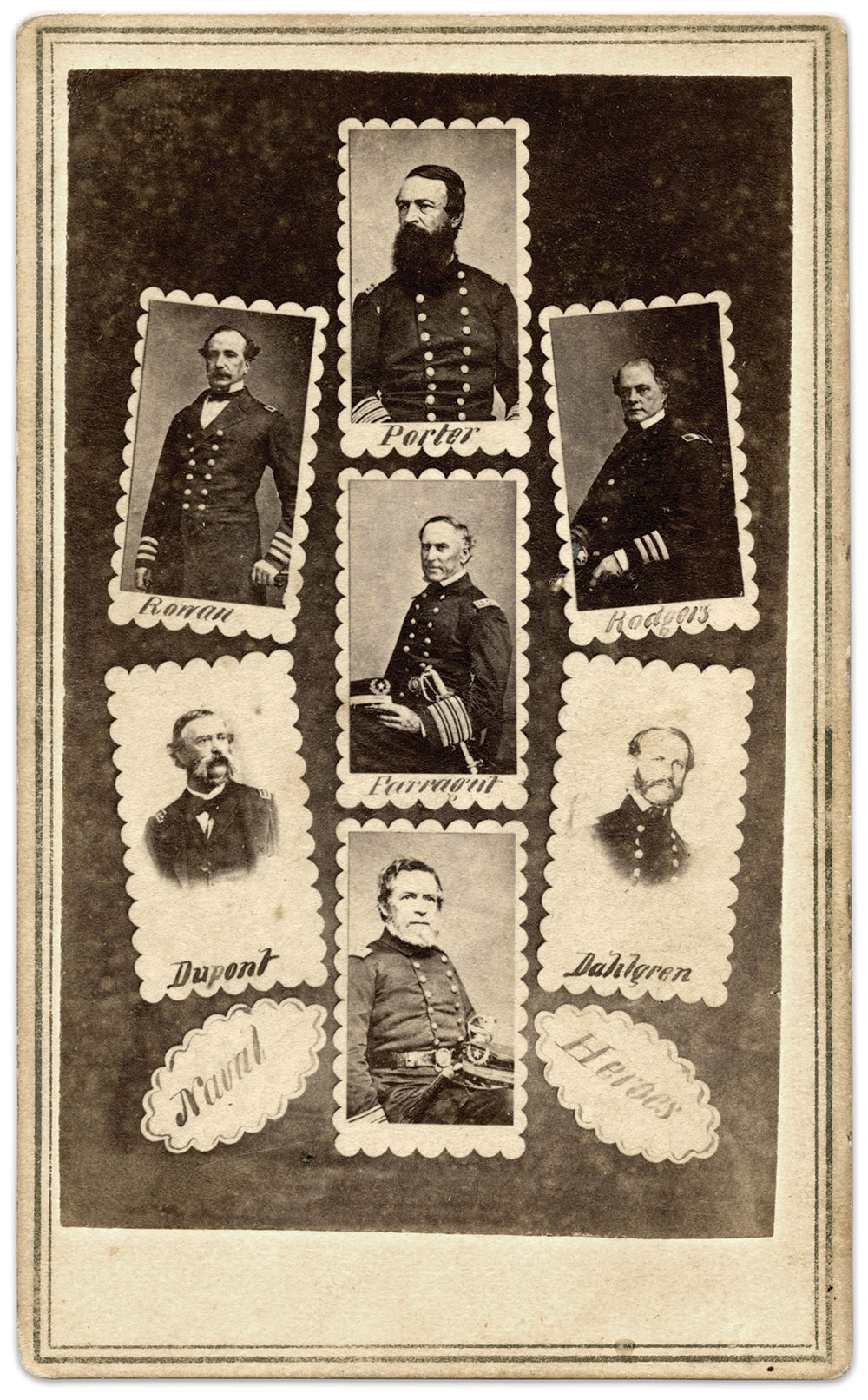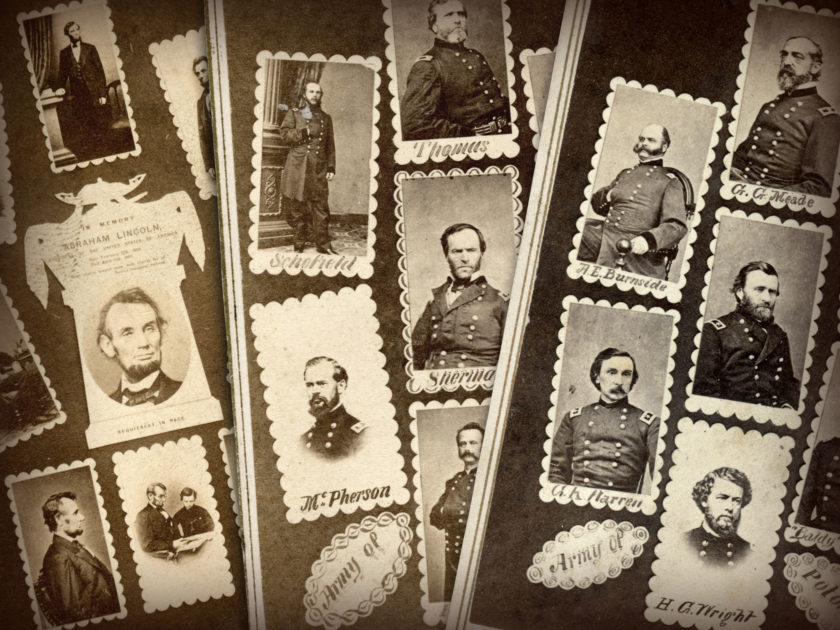By Tom Glass
Patriotic-themed carte de visite montages generate little interest among today’s collectors. Such composites featuring portraits of generals, admirals and wartime political leaders are dismissed as “fillers” used to round out photo albums during the war period.
Nothing could be further from the truth. These images enjoyed widespread popularity across the North and South during the Civil War.

Civil War montages form a distinct genre of the carte de visite. They were artistic creations constructed by pasting cartes de visite and hand-lettered labels to thick cardboard. The mounts and labels might be trimmed with decorative edges, producing the equivalent of a 19th century poster. This poster was then photographed and mass produced as cartes de visite, and sold to Americans excited to possess a likeness of their military and political heroes.
It is fair to surmise that most households owned albums filled with cartes of soldiers, family members, friends and important personages. The latter group might include the president, governors, national and state political figures, and general officers in the U.S. Army and Navy. The juxtaposition of high-profile statesmen and officers with citizen soldiers afforded ordinary Americans a glimpse of influential men in the same context as their fathers, husbands and sons.
These people—the first collectors, in a sense —assembled albums of home front and battlefield images that could serve as an important means to emotionally unite a soldier and his family. For a soldier, the image allowed him to form a lasting bond with his messmates, especially when they were killed, wounded or transferred.
Montages showing navy admirals and army corps and division level commanding generals were of interest to seamen, officers and soldiers who rarely if ever glimpsed these commanders on ship decks or battlefields. Many of these men may have purchased montage album cards to send home to illustrate their written accounts of battles and campaigns led by these featured commanders. They could also be used as appeals to patriotism, as evidenced by the montage here titled “Our Peace Commissioners.”
The media also fueled the desire to own montages. Expansive newspaper coverage of the war created an intense interest in military and political leaders.
“These people—the first collectors, in a sense—assembled albums of home front and battlefield images that could serve as an important means to emotionally unite a soldier and his family.”
Edward and Henry T. Anthony of New York City published perhaps the finest montages. The prominent brothers used original photographic plates provided by the Mathew B. Brady studio and other photographers across the country. Montages based on these plates were of high quality, and held a broad appeal in various regions of the United States.
Some examples of late war montages included drawings made from original photographs. This was particularly true in the South.
Other photographers pirated montages. Such images were typically low-quality copy photographs.
The large number of surviving montage cartes available on collectors’ market today reflects their popularity during the war. Overlooked and undervalued, they deserve a second look.
Representative images here illustrate the varieties of popular themes and leaders. All are credited to the Anthony brothers unless noted.










Tom Glass is a retired professor of leadership at the University of Memphis. He has been a long time collector of Civil War cartes de visite and is author of Lincoln’s Senior Generals: Photographs and Biographical Sketches of the Major Generals of the Union Army (Schiffer Publishing).
SPREAD THE WORD: We encourage you to share this story on social media and elsewhere to educate and raise awareness. If you wish to use any image on this page for another purpose, please request permission.
LEARN MORE about Military Images, America’s only magazine dedicated to showcasing, interpreting and preserving Civil War portrait photography.
VISIT OUR STORE to subscribe, renew a subscription, and more.

